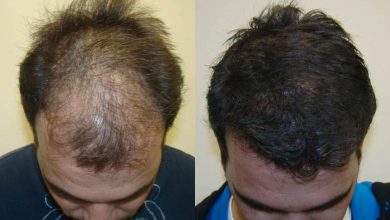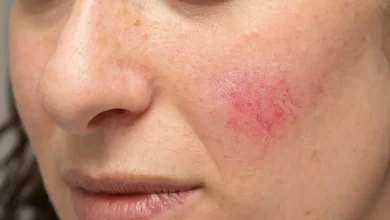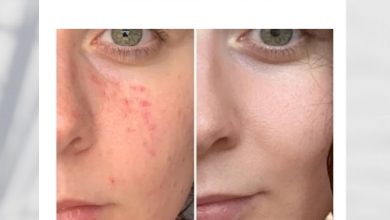How Soon Will PRP Treatment Show Hair Growth?

Hair loss is a common concern that affects individuals across ages and genders. With increasing awareness about innovative hair restoration techniques, many are turning to Platelet-Rich Plasma (PRP) treatment as a promising solution. This non-surgical procedure utilizes the body’s own healing properties to stimulate hair growth, offering a natural approach to combat hair thinning and baldness. If you’re considering PRP Treatment in Abu Dhabi, understanding the timeline for visible results is essential to setting realistic expectations and planning your treatment journey effectively.
What Is PRP Treatment and How Does It Promote Hair Growth?
Understanding PRP Therapy
Platelet-Rich Plasma therapy involves drawing a small amount of blood from the patient, processing it to concentrate platelets, and then injecting this platelet-rich plasma into the scalp. Platelets are rich in growth factors that play a pivotal role in tissue regeneration and healing. When introduced into the scalp, these growth factors stimulate dormant hair follicles, promote blood circulation, and enhance the scalp’s natural ability to produce hair.
The Science Behind Hair Regrowth
PRP therapy leverages the body’s innate healing mechanisms. By delivering high concentrations of growth factors directly to the hair follicles, it encourages the activation of hair growth phases, strengthens weak follicles, and improves the overall health of the scalp. This targeted approach makes PRP an appealing option for those seeking a natural, minimally invasive solution to hair loss.
The Timeline for Hair Growth Post-PRP Treatment
How Soon Can You Expect to See Results?
One of the most common questions among individuals considering PRP Treatment in Abu Dhabi is about the timeframe for noticeable hair growth. While individual results may vary based on factors like the extent of hair loss, scalp condition, and overall health, general timelines provide helpful guidance:
- Initial Improvements (1 to 3 months): Most patients begin to notice subtle changes in hair thickness and scalp health within the first few months after treatment. This period reflects the initial phase of follicle stimulation and improved blood supply.
- Visible Hair Growth (3 to 6 months): The most significant and noticeable hair growth typically occurs between three to six months post-treatment. During this time, new hair strands may appear, and existing hair may become thicker and stronger.
- Full Results (6 to 12 months): Optimal results are often observed after a series of sessions and can continue to improve over a year. Maintenance treatments may be recommended to sustain and enhance the results.
Factors Affecting the Timeline
It’s important to recognize that the speed and extent of hair regrowth depend on various factors including:
- The severity of hair loss
- The individual’s biological response
- The number of PRP sessions undertaken
- Consistency of treatment schedule
- Overall scalp and hair health
Patients must maintain realistic expectations and understand that PRP therapy is a gradual process designed to promote natural regrowth rather than immediate results.
The Treatment Process: What to Expect
Consultation and Evaluation
Prior to initiating treatment, a thorough scalp assessment is conducted. This helps determine the suitability of PRP therapy and tailor the treatment plan according to individual needs.
The Procedure
The process involves several steps:
- Blood is drawn from the patient.
- The blood sample is processed using a centrifuge to separate the platelets.
- The concentrated platelet-rich plasma is injected into targeted areas of the scalp.
- The entire procedure typically takes about 30 to 60 minutes.
Post-Treatment Care
Patients are usually advised to avoid harsh hair treatments immediately after sessions and may be given guidelines to optimize healing and results. Regular follow-up sessions are scheduled to maintain and enhance hair growth.
How Many Sessions Are Needed for Optimal Results?
Standard Treatment Protocol
Most treatment plans involve a series of 3 to 4 sessions spaced about 4 to 6 weeks apart. This schedule allows for cumulative effects and maximizes follicular stimulation.
Maintenance and Follow-up
After the initial series, maintenance sessions may be recommended every 4 to 6 months to sustain hair growth and prevent further hair thinning.
Factors Influencing the Effectiveness of PRP Therapy
Individual Biological Response
Each person’s response to PRP can vary, influenced by genetics, age, and overall health. Some individuals might experience faster and more pronounced results, while others may require additional sessions.
Consistency in Treatment
Adhering to the recommended schedule and post-treatment care significantly impacts the overall success of the therapy. Skipping sessions or neglecting scalp health can delay or diminish results.
Complementary Treatments
Combining PRP with other hair restoration techniques or medications can enhance outcomes, depending on the specific case.
Benefits of Choosing PRP Treatment for Hair Loss
- Natural Approach: Utilizes the body’s own growth factors, reducing the risk of adverse reactions.
- Minimally Invasive: No surgical procedures or incisions are involved.
- No Downtime: Patients can resume normal activities immediately after treatment.
- Suitable for Various Types of Hair Loss: Effective for androgenetic alopecia, thinning, and early-stage baldness.
Tips for Maximizing Hair Growth After PRP Treatment
Maintain a Healthy Lifestyle
Adequate nutrition, hydration, and stress management contribute to healthier hair growth.
Follow Post-Treatment Guidelines
Adhering to medical advice regarding scalp care, hair washing, and activity restrictions helps optimize results.
Consider Lifestyle Modifications
Avoiding smoking, excess alcohol, and harsh hair treatments can support the longevity of the results.
Frequently Asked Questions (FAQs)
1. How soon will I see noticeable hair growth after PRP Treatment?
Most patients notice initial improvements within 1 to 3 months, with more significant hair growth typically occurring between 3 to 6 months after treatment.
2. Is PRP Treatment effective for all types of hair loss?
PRP therapy is most effective in early to moderate stages of hair thinning and androgenetic alopecia. It may be less effective in cases of extensive baldness or scarring alopecia, where other treatments might be necessary.
3. How many sessions are generally required to achieve desired results?
A standard course involves 3 to 4 sessions, scheduled at 4 to 6-week intervals. Maintenance sessions are often recommended every few months to sustain results.
4. Can PRP treatment be combined with other hair restoration methods?
Yes, PRP can be combined with other therapies such as medications, microneedling, or laser treatments to enhance overall outcomes, depending on individual needs.
Final Thoughts
Understanding how soon PRP Treatment in Abu Dhabi can show hair growth helps set appropriate expectations and prepares you for the journey ahead. The process is gradual, emphasizing natural regeneration and follicle rejuvenation. Patience, consistency, and proper post-treatment care are key to achieving the best possible results. If you’re considering this innovative approach to combat hair loss, consult with qualified specialists to develop a personalized treatment plan that aligns with your goals and hair health.




